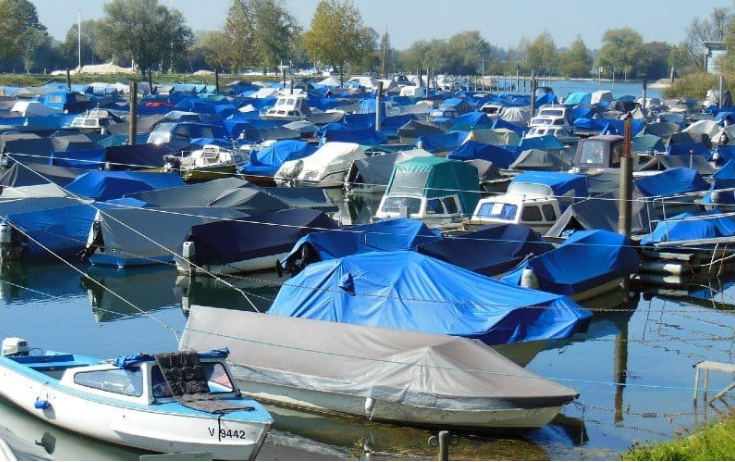Properly protecting and storing a boat is an important part of boat ownership. One way to do this is to cover the boat with a tarp, which can help protect against the elements, dirt, and debris. Additionally, a tarp can add a layer of insulation and reduce condensation which can help extend the life of the boat. Covering a boat with a tarp can be a bit daunting for novice boat owners, so being aware of the proper steps to take can help make the process go more smoothly. In this blog post, boat salvage tampa fl will discuss how to cover a boat with a tarp, from selecting the right materials to ensuring a secure fit. With the right preparation and approach, boat owners can feel confident that their boat is properly covered and protected.
1. Choose the right size tarp for your boat
When it comes to covering your boat with a tarp, the most important step is to choose the right size. You want to make sure the tarp is large enough to cover the entire boat and rope it securely to the bow and stern. If the tarp is too small, it won't cover the boat properly, leaving it vulnerable to the elements. Measure the length, width, and height of the boat to determine the size of the tarp you will need.
2. Secure the tarp around the boat's frame
After you have laid out the tarp, it is time to secure it to the boat's frame. Start by pulling the tarp tight around the frame of the boat. Use bungee cords to attach the tarp securely to the frame. Make sure the tarp is taut and that the cords are secure to prevent the tarp from becoming loose or shifting during transport. Once you have the tarp secured, use rope to tie the tarp in place. The rope should be tied in multiple places to ensure that the tarp does not come loose during transport.
3. Secure the tarp with straps
Once you have the tarp draped over the boat, the next step is to secure it with straps. This is key to ensure that the tarp does not blow off in windy conditions. Start by attaching straps to the eyelets at the corners of the tarp and looping them around the boat’s cleats or railings. You will need to adjust the straps to pull the tarp tight against the boat so that it is secure. Make sure to double-check that the straps are tight around the boat before you move on to the next step.
4. Use tarp clips and bungee cords
After you have your tarp draped over the boat, the next step is securing it in place. This can be done easily with tarp clips and bungee cords. Tarp clips are designed to hold the edges of the tarp in place and prevent it from slipping off. They are easy to use and can be purchased at any hardware store. Once the tarp is clipped in place, you can use bungee cords to keep the tarp tight and secure. Make sure to loop the bungees over the tarp several times and attach them to the boat securely. This will ensure that the tarp doesn’t come undone in windy or wet conditions.
5. Secure the tarp to the ground with stakes
After you have the tarp spread over the boat and the excess material tucked away, it is time to secure the tarp to the ground with stakes. Place the stakes around the perimeter of the tarp, spaced out evenly and at least 8-10 inches away from the edges. Drive the stakes into the ground with a mallet or hammer and rope or twine the stakes together. This will help to keep the tarp securely fastened and prevent it from blowing away in the wind.
Conclusion
Covering your boat with a tarp is an essential part of boat maintenance and can help protect your boat from the elements with the help of Flagship Towing. When selecting a tarp, it's important to consider the size and material of the tarp, as well as the type of boat you have. With proper care and maintenance, your tarp should last for years and keep your boat safe from the sun, wind, rain, and snow.

